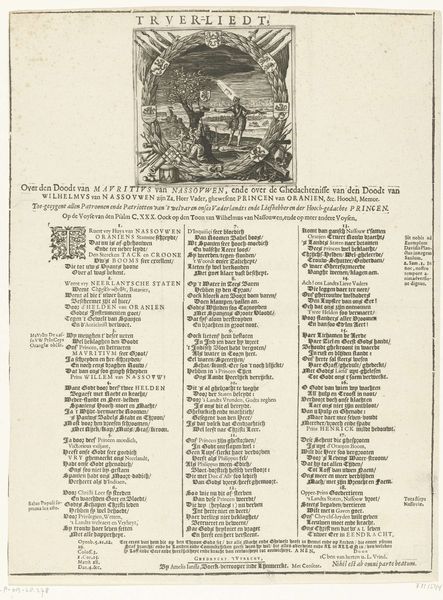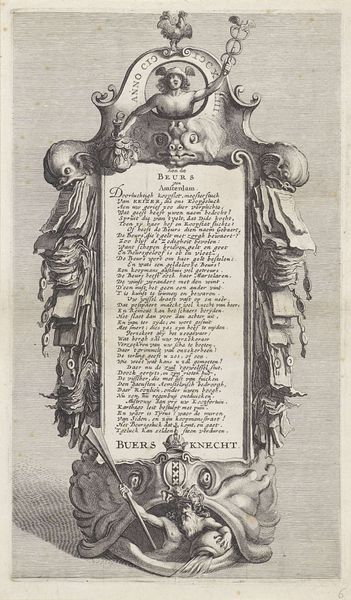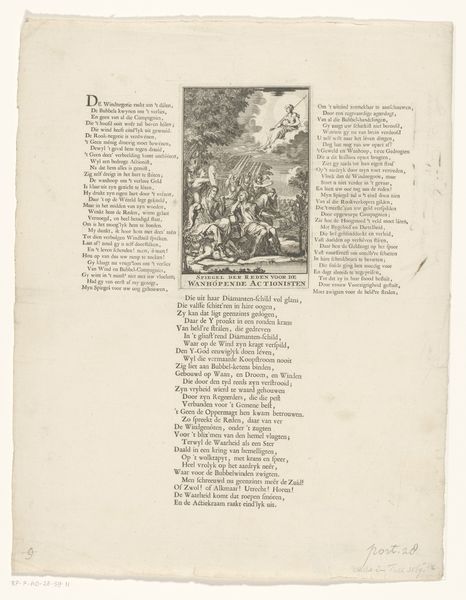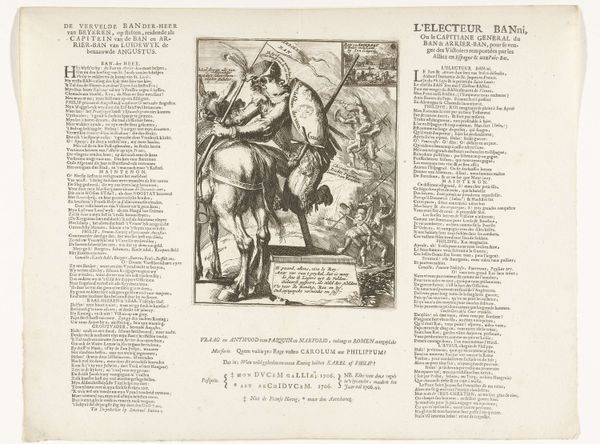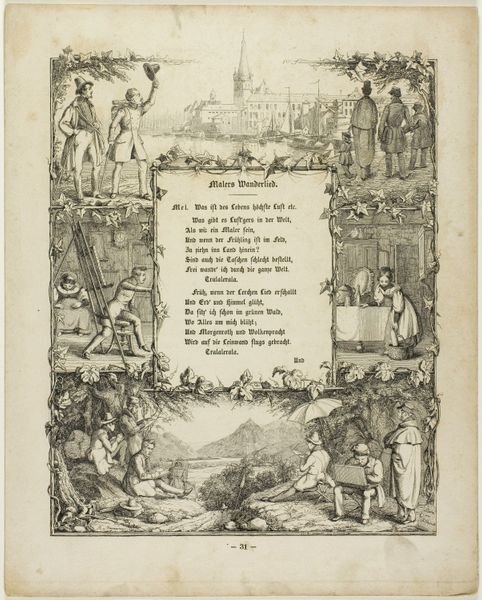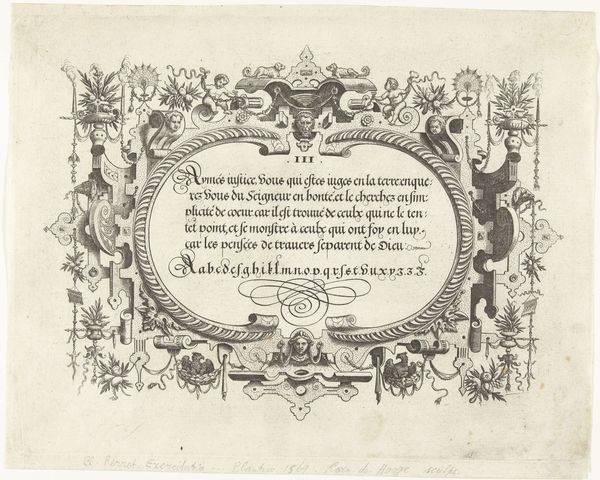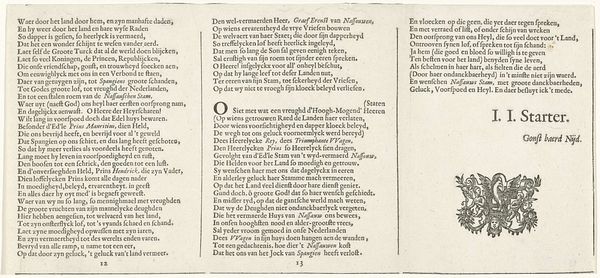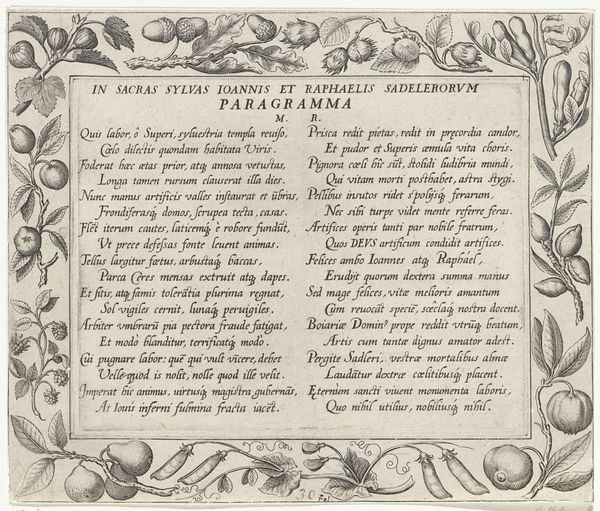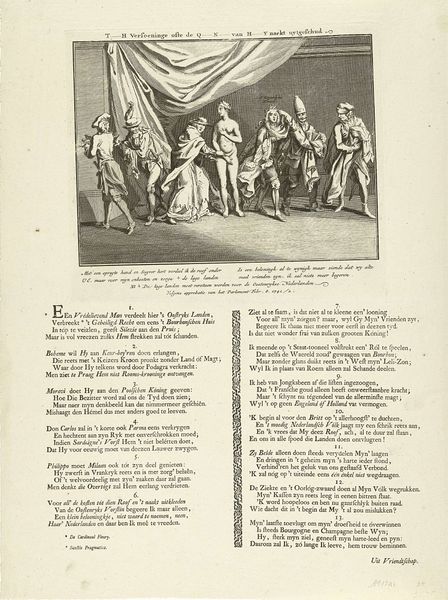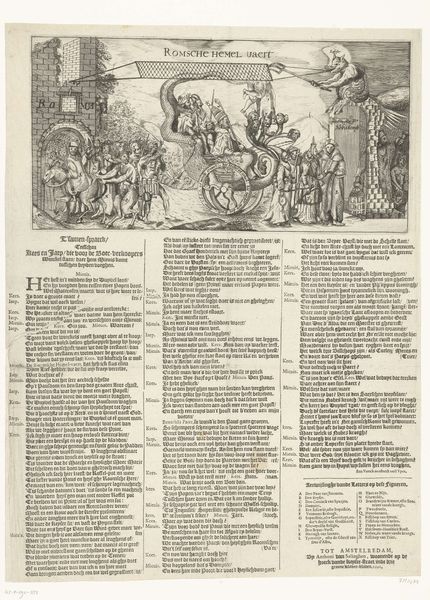
print, textile, engraving
#
portrait
#
allegory
#
baroque
# print
#
textile
#
history-painting
#
engraving
#
sword
Dimensions: height 452 mm, width 312 mm
Copyright: Rijks Museum: Open Domain
Editor: So, this engraving from 1689, titled "Allegory on the Rescue of England by William III and Mary II Stuart, 1688," really strikes me. The figures seem suspended between triumph and a kind of weighty responsibility. What do you see in this piece? Curator: I see a complex articulation of power and legitimacy in a moment of intense political and social upheaval. This isn't just a portrait; it’s a carefully constructed piece of propaganda. Consider the context: William and Mary's ascent to the throne, the Glorious Revolution... What narratives are being reinforced here through allegory? Editor: I suppose it’s trying to show them as divinely ordained saviors? The text seems very celebratory, and those laurel wreaths give them an air of classical authority. Curator: Exactly. And notice how the imagery is deployed. How might the depiction of William and Mary as almost mythical figures contribute to a narrative that silences or marginalizes other perspectives on these historical events? Editor: I see what you mean. The engraver seems focused on an idealized version of events, perhaps to strengthen the monarchy's public image. It kind of makes me question what’s *not* being shown. Curator: Precisely. This piece encourages us to delve deeper, and see that the dominant narratives of power are always constructed. We need to investigate whose stories are elevated, and whose are erased from these portrayals of history. What has caught your eye particularly about this engraving? Editor: Looking at it with that in mind makes it feel a lot more complicated, like it's posing more questions than it answers! Thanks for your insight. Curator: Indeed. Engaging with art like this offers vital entry points to critically unpack legacies of gender, power, and colonialism that endure today.
Comments
No comments
Be the first to comment and join the conversation on the ultimate creative platform.
